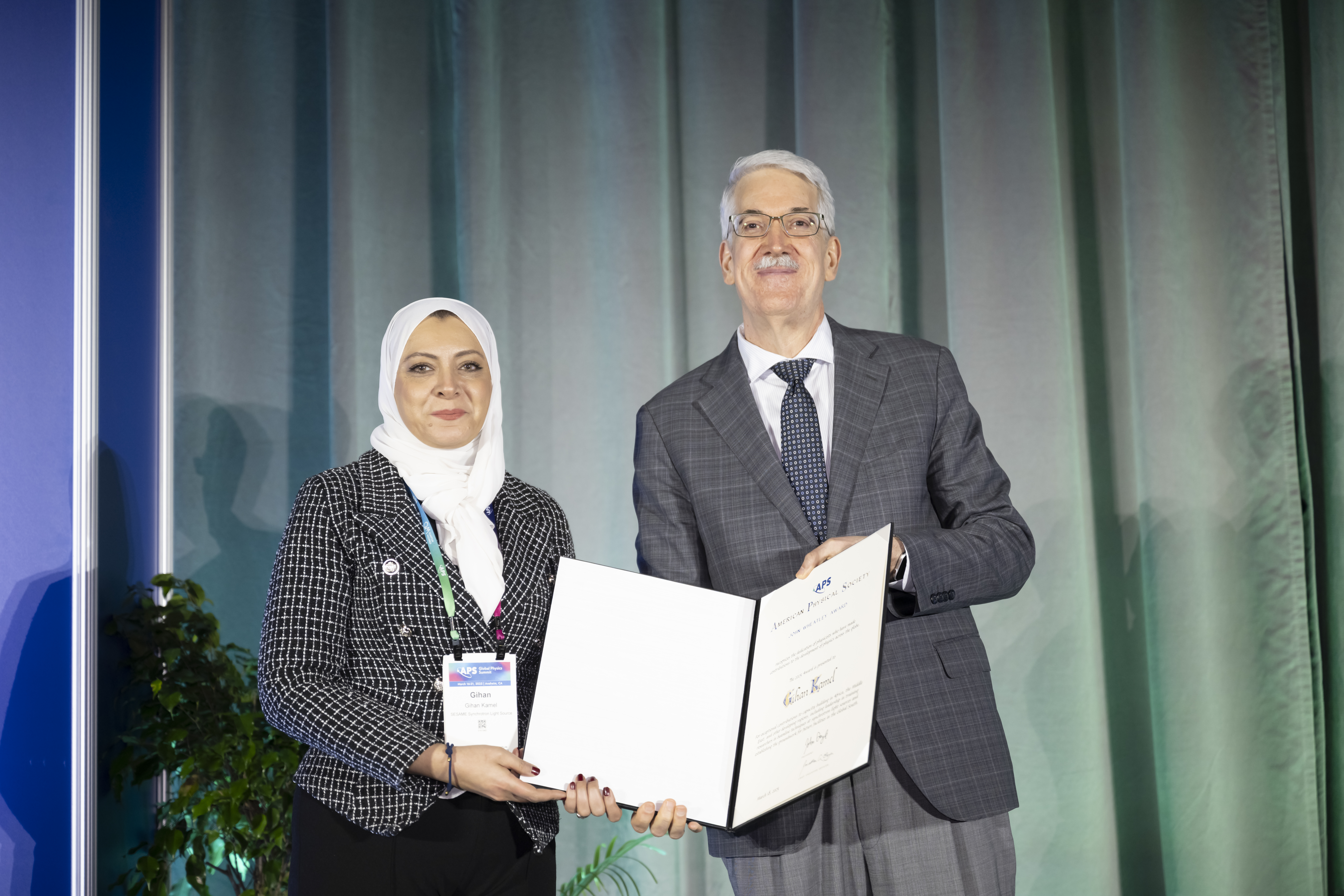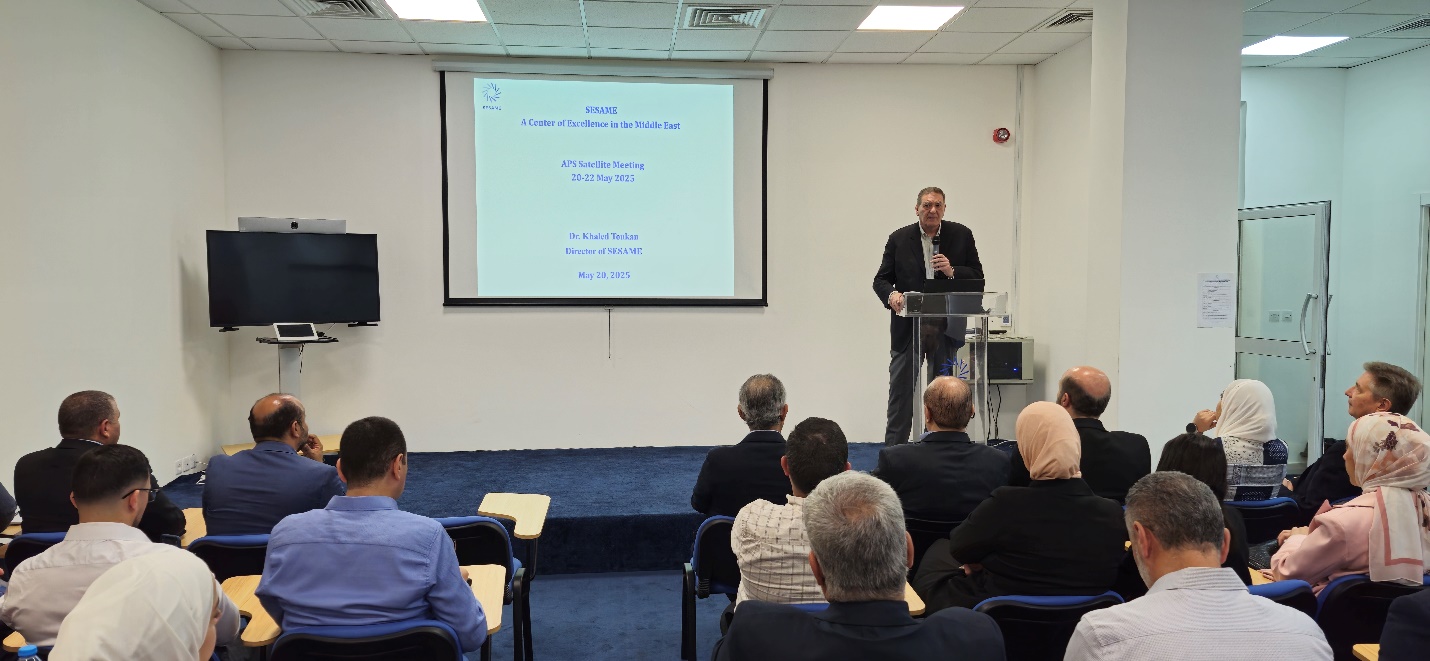
On 20-22 May, SESAME gathered over 100 participants from twelve universities and institutions across Jordan on its premises for this year’s edition of the American Physical Society (APS) Global Physics Summit. Among the participants were a user from Egypt and four users from Türkiye who were carrying out experiments at SESAME at the time of the event.
The meeting was more than a showcase of research—it was a statement on equity and resilience, as well as dedicated talks to teach prospective users of SESAME beamlines present at the event, how to write and submit highly competitive proposals for beam time as SESAME’s call for new proposals coincided with the event. The meeting which also highlighted the perspective and significance of ethical research and the use of artificial intelligence (AI) in publishing scientific research, saw the participants share their views on the proper utilization of AI in scientific research.
In his opening remarks, the Director of SESAME, Dr. Khaled Toukan, spotlighted the power of science as a bridge between cultures, disciplines, and nations. In his words, “This has only been possible through science—because science knows no boundaries. Our focus has always been on how our knowledge and capabilities can improve the lives of our societies”. Over the years, SESAME has made that vision a reality. Today, with our five operational beamlines, we are proud to say that SESAME as a center of excellence addresses the fundamental essentials of life.”
The satellite event, which was hosted on the theme “In the Mediterranean Cradle of Civilization: A Snapshot of Women in Archaeology”, by Gihan Kamel, Principle Infrared beamline scientist at SESAME, and one of three recipients of the 2025 APS John Wheatley Award, celebrated and honored the vital, yet often underrecognized, contributions of women to archaeological science.
“Women have always been at the heart of scientific discovery, yet their contributions are often overlooked. This session is about recognizing their impact and inspiring the next generation of female scientists” said Gihan.
Five women scientists from across the region presented their works, sharing the ways synchrotron science is advancing the understanding of ancient civilizations today. Eman Khalifa of Cairo University, Egypt, highlighted the legacy of women scientists from antiquity to today “Celebrating the stories of impactful women scientists can encourage future generations. My work explores scientific applications that can transform how we study ancient Egyptian pottery, especially using synchrotron radiation for detailed material analysis.”
In “Anatolian Archaeology: Cutting-Edge Science in a Cutting Environment”, Gonca Dardeniz, Istanbul University, Türkiye, recounted her decade-long journey with synchrotron science, from Argonne to SESAME. “From examining ancient glass to identifying early pigments, synchrotron light has been both informative and challenging. First, I was lost as to what I was doing because I had little knowledge about synchrotron at the time. But these collaborations between social and natural scientists are essential for breakthroughs in archaeological research” she noted.
Maram Naes of Technical University Berlin, Germany, presented “Across Borders and Scales: Investigating Nabataean Painted Heritage at SESAME and BESSY II Synchrotron”, focusing on the colorful legacy of Petra’s wall paintings. “Using both European and regional facilities, we successfully identified the elemental and chemical compositions of these paintings. Our work at SESAME represents a new chapter in non-destructive analysis of cultural heritage using available techniques at BEATS” she explained.

Farahnaz Bayat Nejad, from the Islamic Azad University Central Tehran Branch, Tehran, Iran, delved into the glass artifacts of the ancient Persian city of Istakhr in her submission, “The Sassanid Fingerprint in Glass”. Her research uses synchrotron X-ray fluorescence to reveal the chemical signatures of early glass production. “This research uncovers the social and economic networks of the Sassanid era, while demonstrating the potential of synchrotron science in cultural heritage studies”, she said.
Arianna Traviglia of the Centre for Cultural Heritage Technology (CCHT) at the Istituto Italiano di Tecnologia (IIT) in Venice, Italy, highlighted how her research group at CCHT is using synchrotron light and other advanced technologies to analyze and preserve cultural heritage materials by understanding their composition and degradation. "The combination of cutting-edge technology and in-depth scientific research is helping preserve and protect cultural heritage for the future, shedding light on the past while contributing to the development of new safeguarding technologies."
Finally, the program brought the participants up to speed with key milestones in the 2025 International Year of Quantum Science and Technology. The APS Global Physics Summit 2025 includes 17 satellite site events across 16 countries and four continents. SESAME’s participation stands out as a shining example of how regional scientific institutions can make a global impact on science policy.

